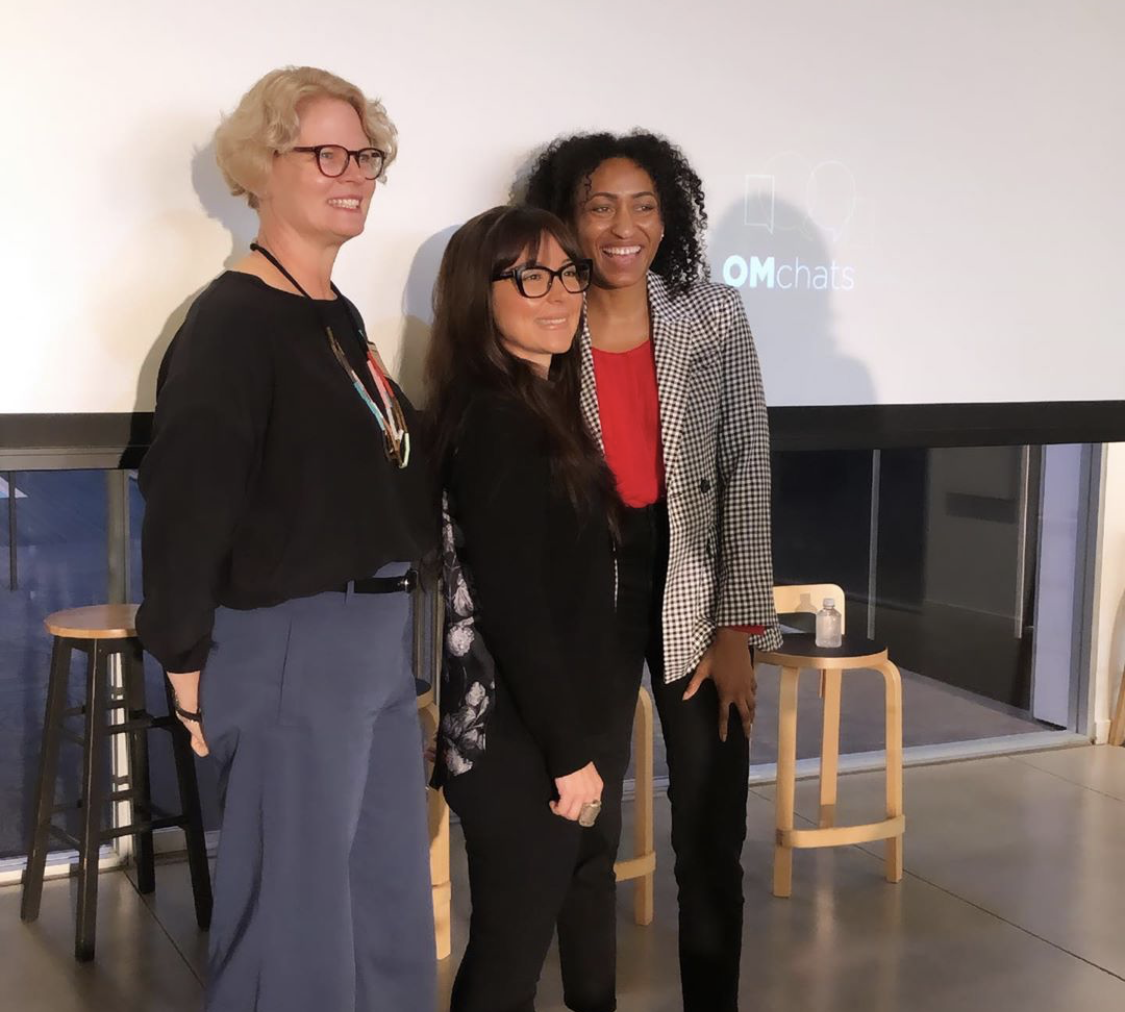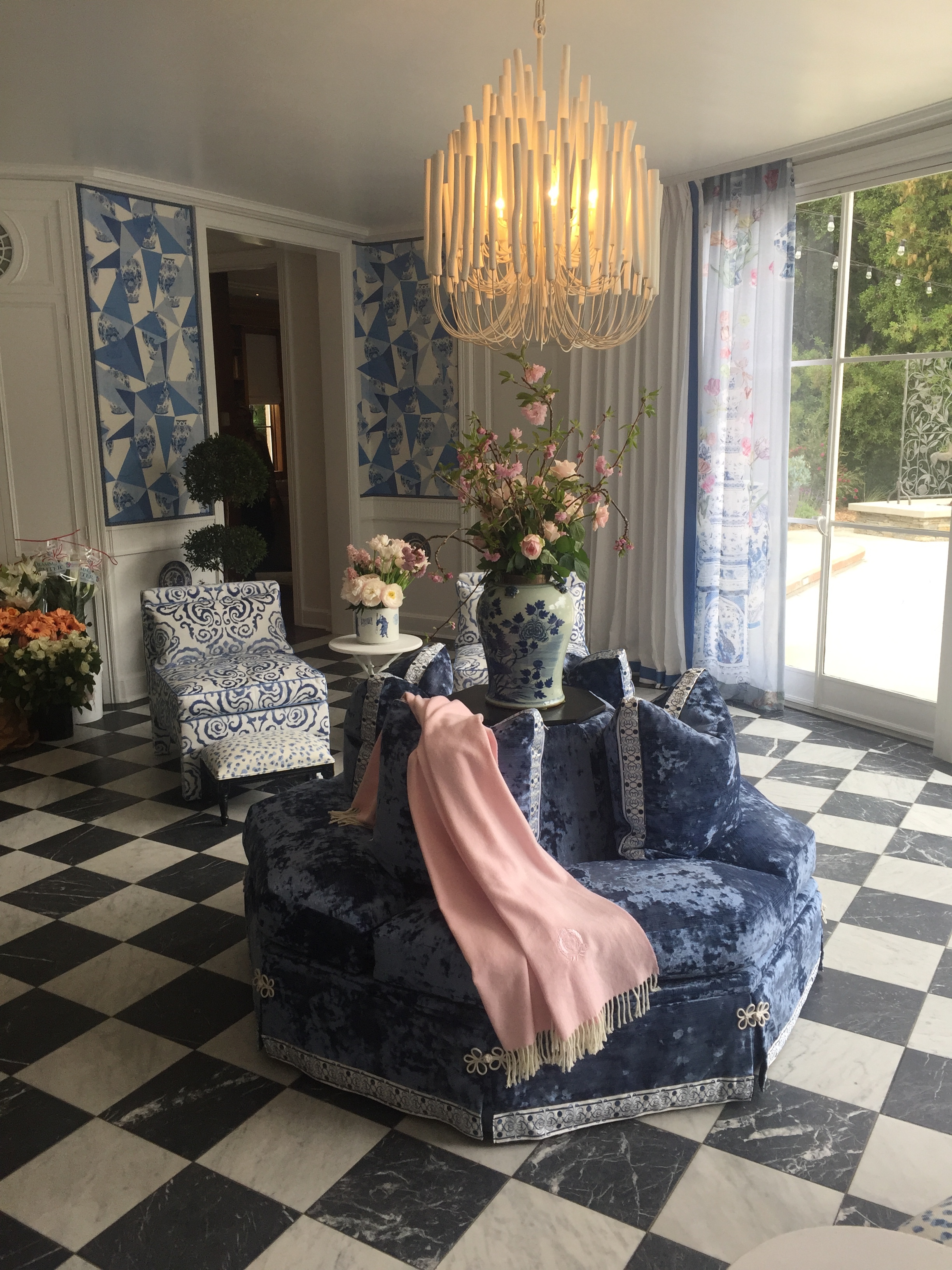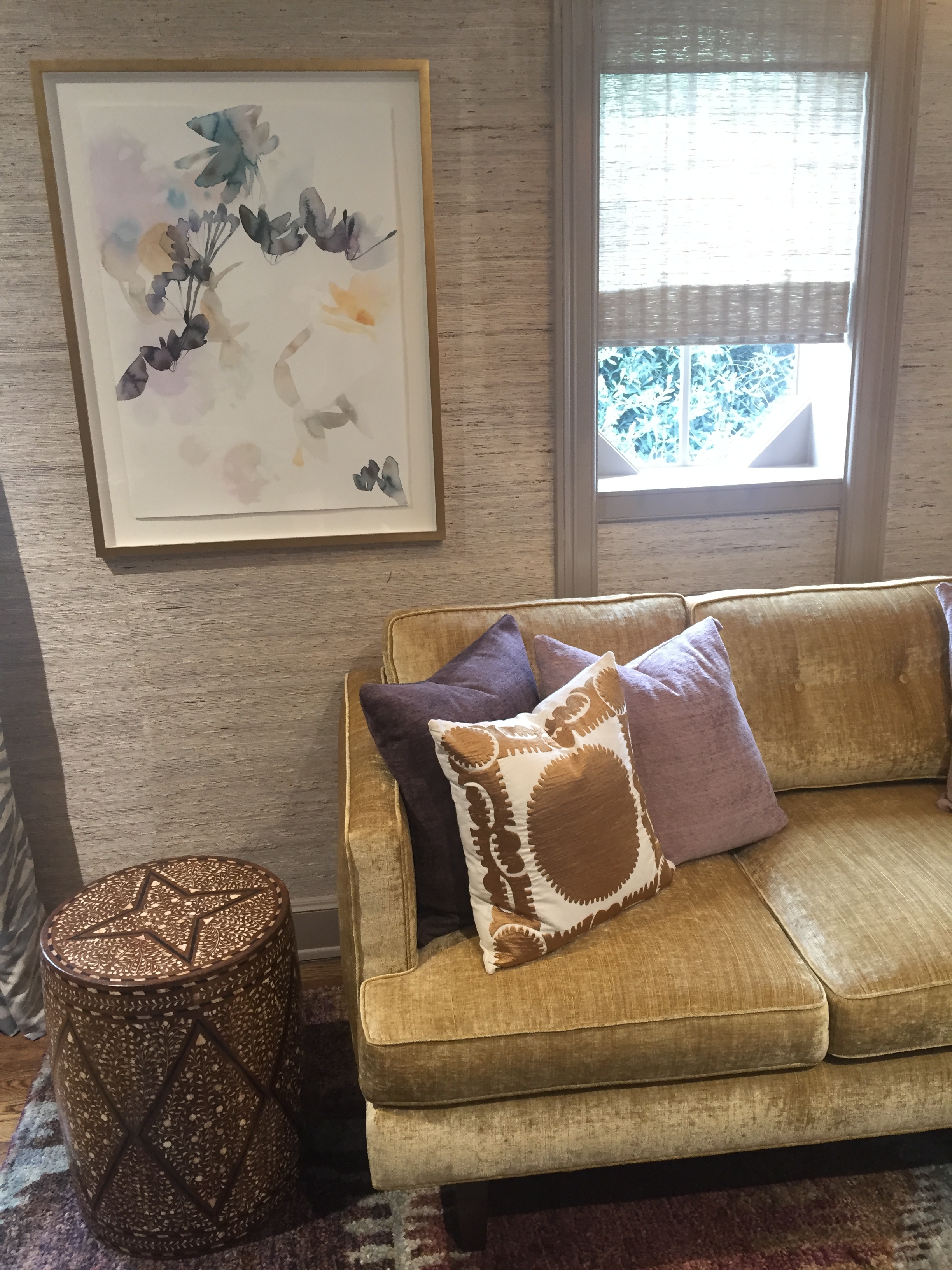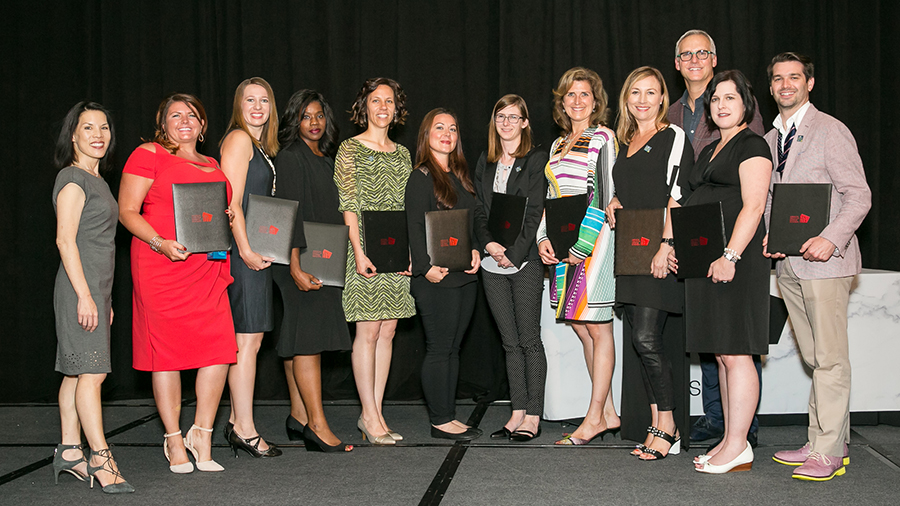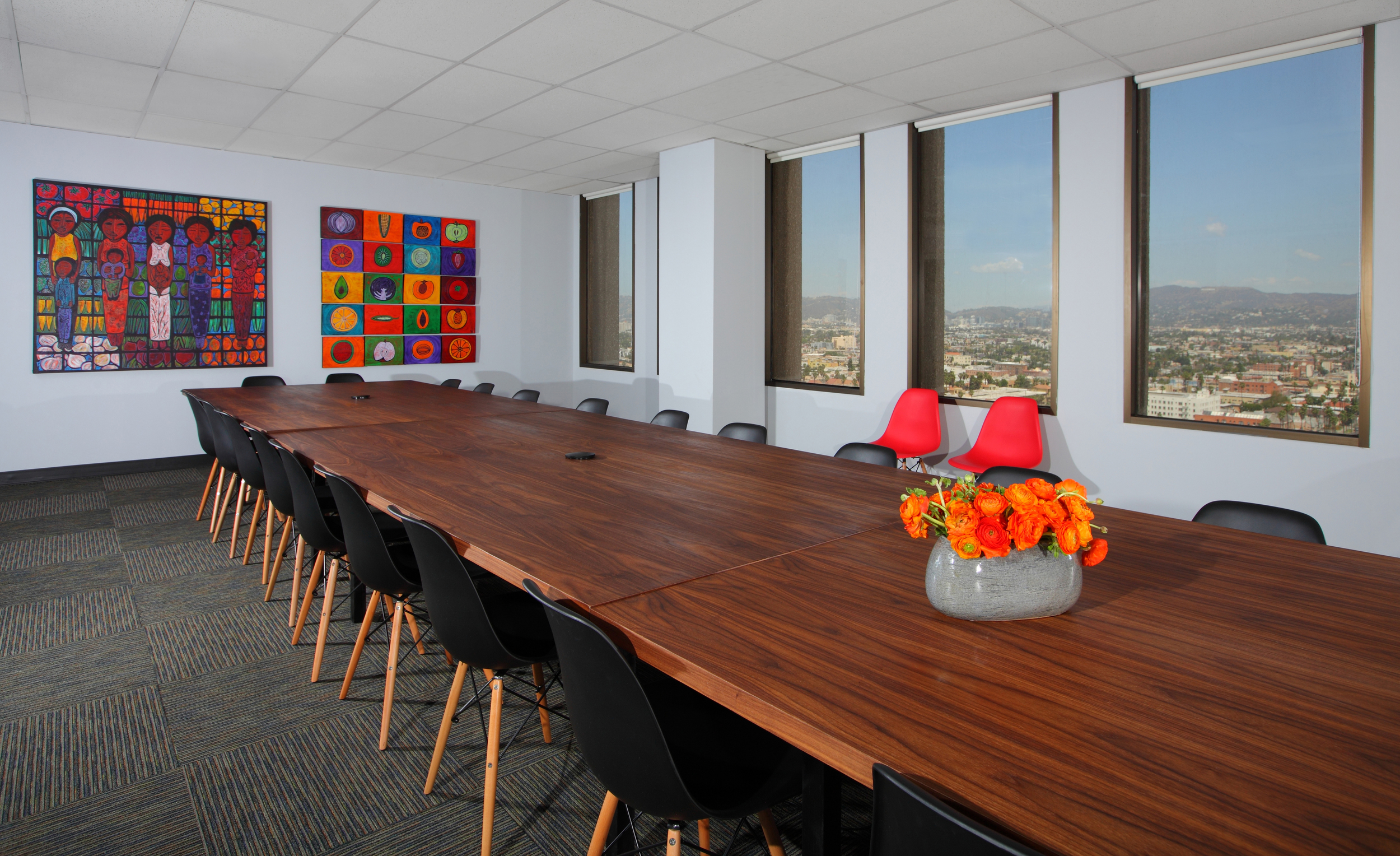Healing Spaces: How Designers Can Cultivate Wellness in the Built Environment
/Empathy can uncover the deep needs of humans in private and public spaces. Leading practitioners in LA's a+d community gathered Friday, October 11th at the Helms Design Center for a conversation about the role of empathy in creating extraordinary experiences.
Hosted by OM and PLP SoCal, this inaugural session of OM Chats gathers leading voices in architecture, interior, and product design for a morning discussion about the ideas shaping design and wellness. Speakers include Sarah Barnard, WELL AP + LEED AP, principal of Sarah Barnard Design, Julie Smith-Clementi, AIA, IDSA, architect and product designer, and Adaeze Cadet, AIA, LEED AP, BD+C, vice president at HKS.
The discussion centered around how to design spaces and products that reflect a broader — more empathetic — understanding of the human experience in the workplace, health care spaces, educational facilities, and wherever people gather and live.
Photo by: Steven DeWall
Transcript of Sarah Barnard’s presentation:
In my practice, as a WELL and LEED accredited interior architectural designer, I specialize in creating environments that support the occupant's mental and physical wellbeing. An empathetic approach is the foundation of my process.
As a neurodivergent person, with sensory processing differences, I know all too well that we live in a world designed for neurotypical people. Normative built environments can be extremely uncomfortable, even traumatic, for many people. For example, individuals with Post Traumatic Stress and folks on the Autistic spectrum may both have sensitivities to sound, light, textures, and odors. People with chronic migraines and people who are chemically sensitive might also have overlapping reactivity to fragrances, sounds, and light.
Photo by: Steven DeWall
The reality is, most humans will have experiences during their developmental years that forever impact their physical, mental, and emotional wellbeing.
Research indicates that traumatic experiences don't just happen to some people; they happen to most people. In the late 1990s, Kaiser Permanente conducted a study on Adverse Childhood Experiences (ACEs). They asked more than 13,000 of their members to complete a 10-question survey on traumatic childhood experiences and to report any health issues they were currently facing.
From this pool of respondents, about two-thirds had at least one ACE. 12% of the population reported an ACE score of 4 or more. An ACE score of 4+ nearly doubles the risk of heart disease and cancer and increases the risk of attempted suicide by twelve times. Understanding that the health impacts of trauma are not a "special population" issue, but a general population issue is critical to our ability to design with empathy.
Artwork: Deborah Cansler, Photo: Chas Metivier
No matter our circumstance, it can be challenging to share details about ourselves that may be perceived as a disability. So, while we can't always ask, we can understand that many of us may have unaddressed environmental needs.
Even neurotypical people, without exposure to trauma, can easily experience cognitive overload in intensely stimulating environments. Activities like commuting, social interactions, processing large amounts of data, being exposed to fragrances, and repetitive auditory disturbances, can impact our mental and emotional resilience in unseen ways. Because of the magnitude of stressors in public life, humans benefit in measurable ways from a restorative home environment. Restoring at home makes us stronger in the workplace and the world at large.
Interior Design: Sarah Barnard, Artwork: Renae Barnard + Ruben Vincent, Photo: Steven DeWall
When designing commercial office environments for clients like National Geographic Entertainment, the Christopher and Dana Reeve Foundation/ Life Rolls On and the National Immigration Law Center, I consider the intersections and overlap of the community members and develop strategies to accommodate the highest possible needs.
Though it is vital to remember, as we have access to an ever-growing body of research that informs our practice of designing spaces that encourage wellbeing, it is nearly impossible to soothe all humans with a single design solution. So, meeting clients where they are and creating a safe, judgment-free dialogue is the first step in designing inclusive, supportive spaces.
Interior Design: Sarah Barnard, Artwork: Jose Ramirez, Photo: Chas Metivier
In my experience, being mindful and empathetic to diverse sensitivities creates an opportunity to design spaces that inspire a sense of peace. Armed with the understanding that we can't expect anyone to share the details of their pain, nor ask for what they need, designers must consider the most sensitive populations, so more environments feel safe and empowering to all.
How do we do this?
We must think about an expansion of universal design principles to include physical, mental, and emotional health. For example, we know that biophilic design can reduce physiological and psychological stress. Having a comfortable place to meditate can reduce anxiety, depression, and pain. Exposure to natural light can regulate our circadian rhythms and increase serotonin levels.
Artwork: Ruben Vincent, Photo: Steven DeWall
When access to nature isn't readily available, art is an excellent alternative solution. Viewing original works of art can stimulate the brain, providing an imaginative connection to the mind of the artist and a momentary transcendence into another reality. In 2011 a University of London study found that viewing art produces a similar effect in the brain as falling in love, causing a rush of pleasure producing dopamine.
Just as we consider the positive impacts of nature and art on health and wellbeing, we place equal importance on the selection of materials and how they can shift the feeling, light levels, and acoustic qualities of a space.
Interior Design: Sarah Barnard, Artwork: Kevin Moore, Photo: Ace Misiunas
Because truly non-toxic materials are in limited supply, our studio regularly designs textiles, wallpapers, furniture, and light fixtures, working with local craftspeople to fabricate safely and responsibly.
While we are mindful of avoiding materials with VOCs, some non-toxic materials like linseed oil, tung oils, and even citrus-based solvents can cause distress to people who are chemically sensitive, people undergoing chemotherapy and people with COPD.
Interior Design: Sarah Barnard, Artwork: Kevin Moore, Photo: Ace Misiunas
In 20 years of professional practice, I have learned that empathy and mindfulness are critical in creating healing, supportive environments. Contemplating design strategies that can benefit all populations, is not a trend; it's an evolution in expanding our quality of life.
Together, we are part of a movement to be mindful, empathetic, and collaborative, supporting one another to make all built environments healing, restorative spaces.
Interior Design: Sarah Barnard, Photo: Steven DeWall
Sarah Barnard designs healthy, happy, personalized spaces that are deeply connected to nature and art. With a contemporary approach that employs traditional vocabulary, Barnard’s range of style is innovative yet time-honored. The ideas most essential to her practice and design process are wellness, historic preservation, and the infinite ways in which design can enhance life.


